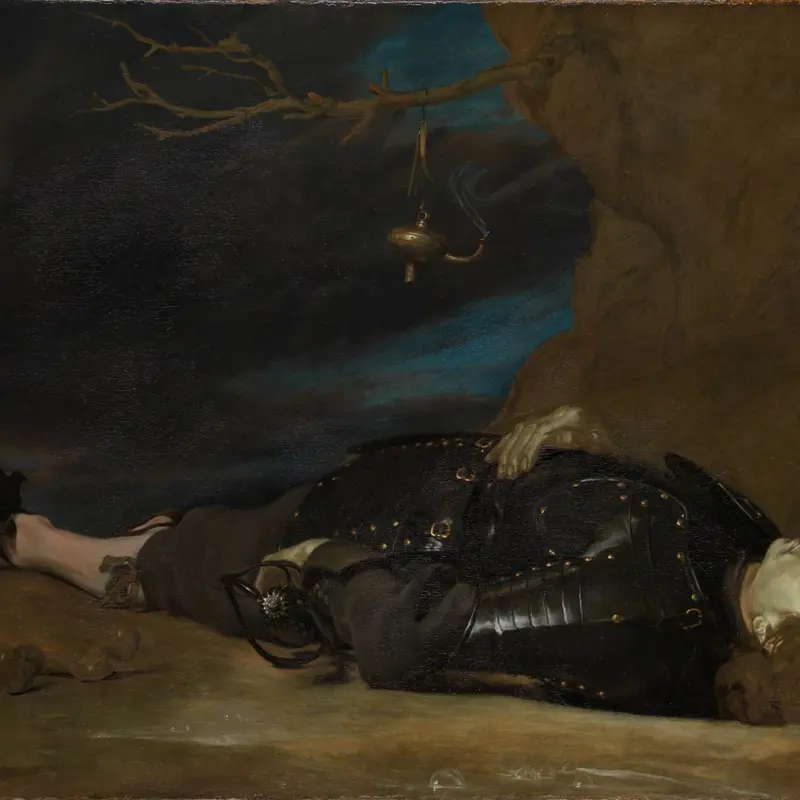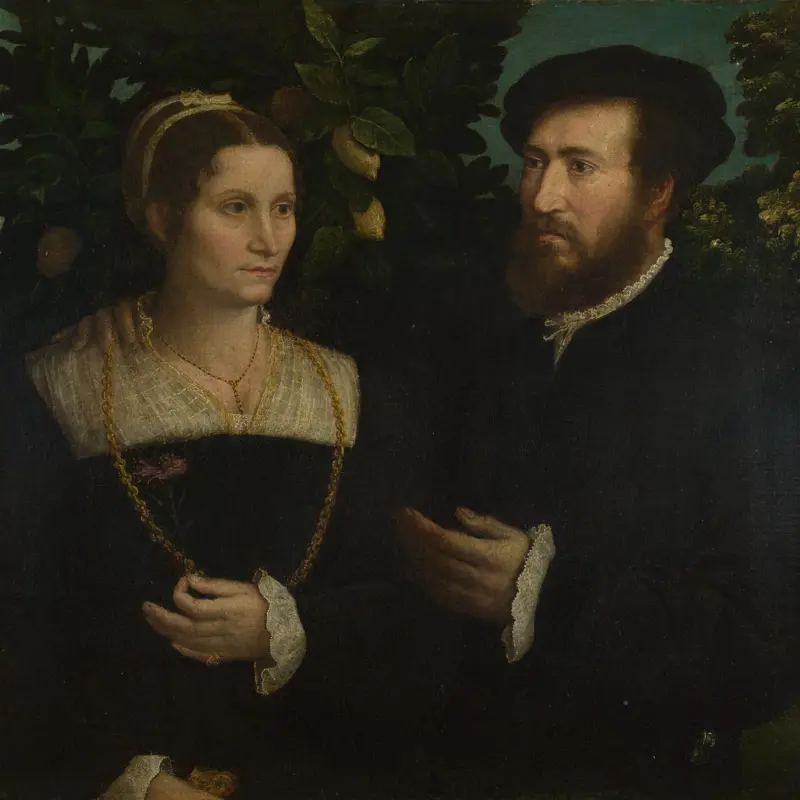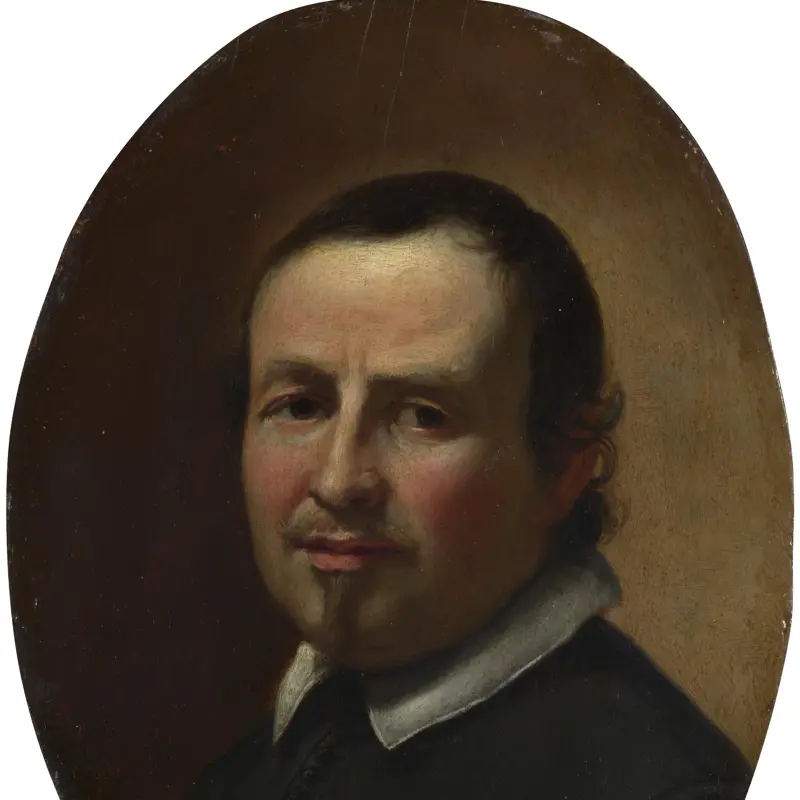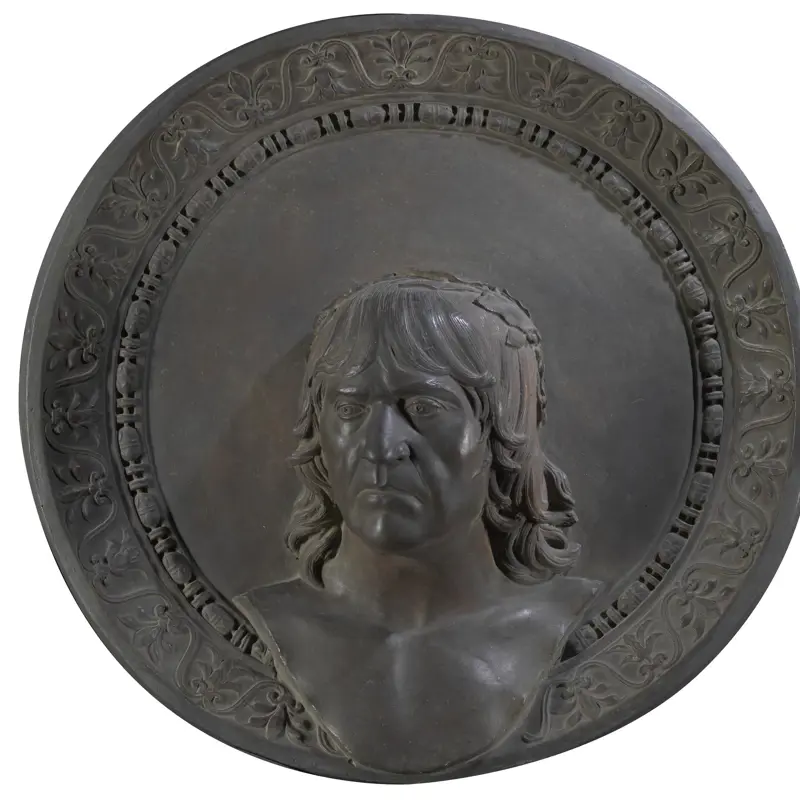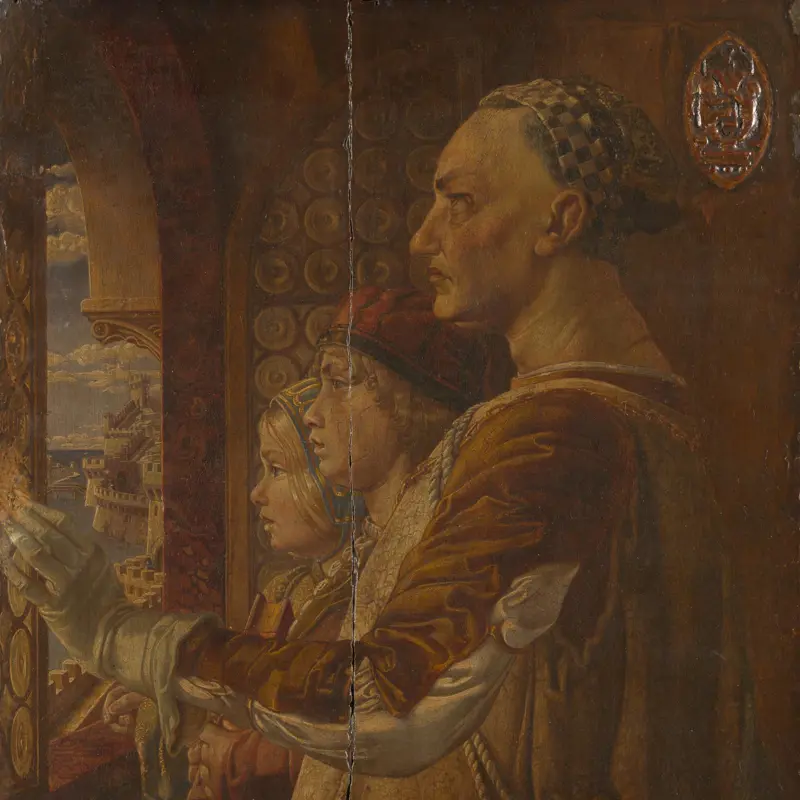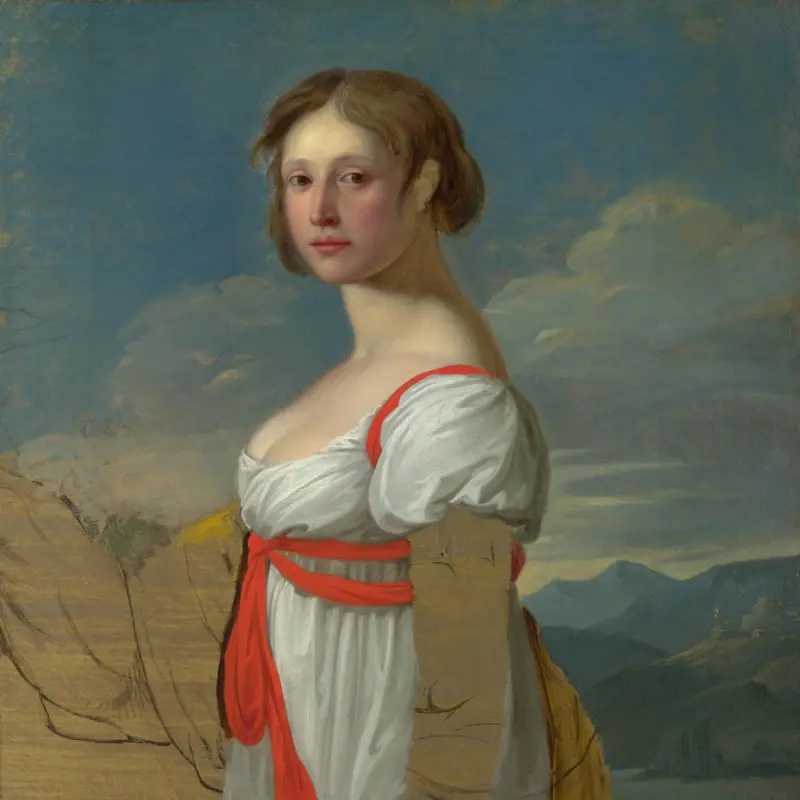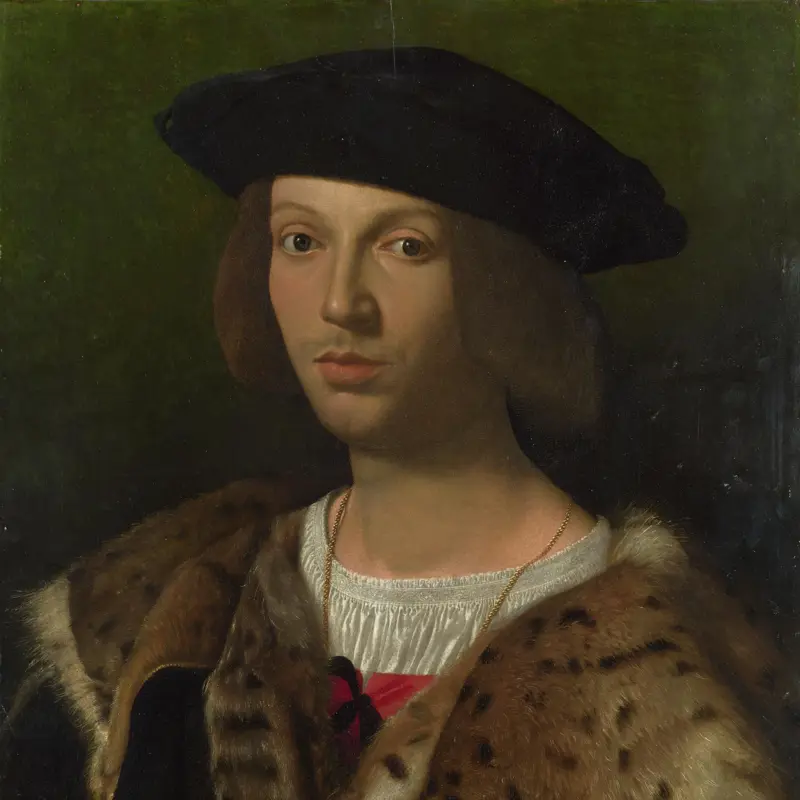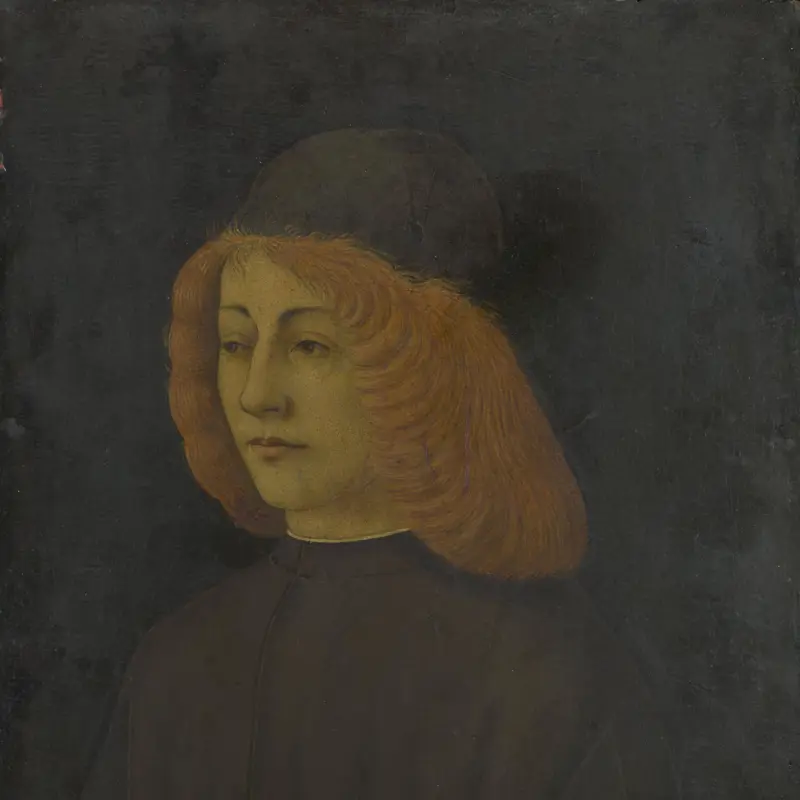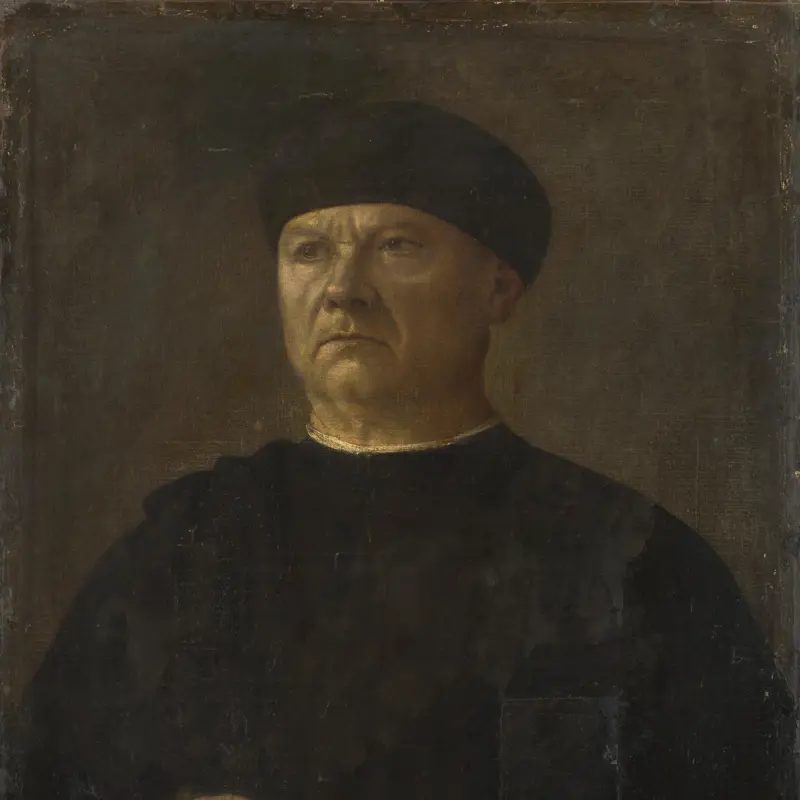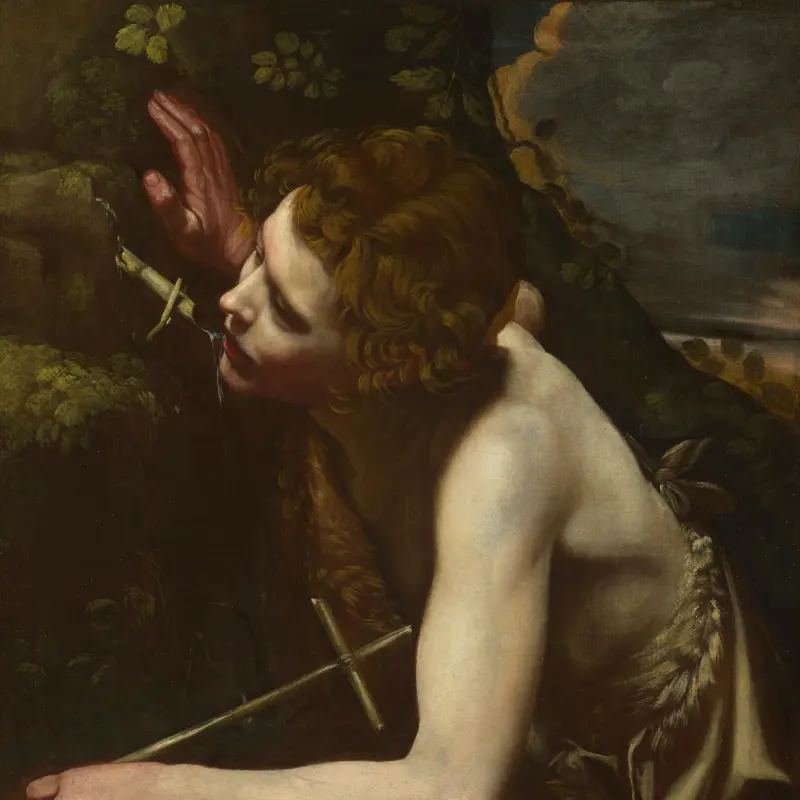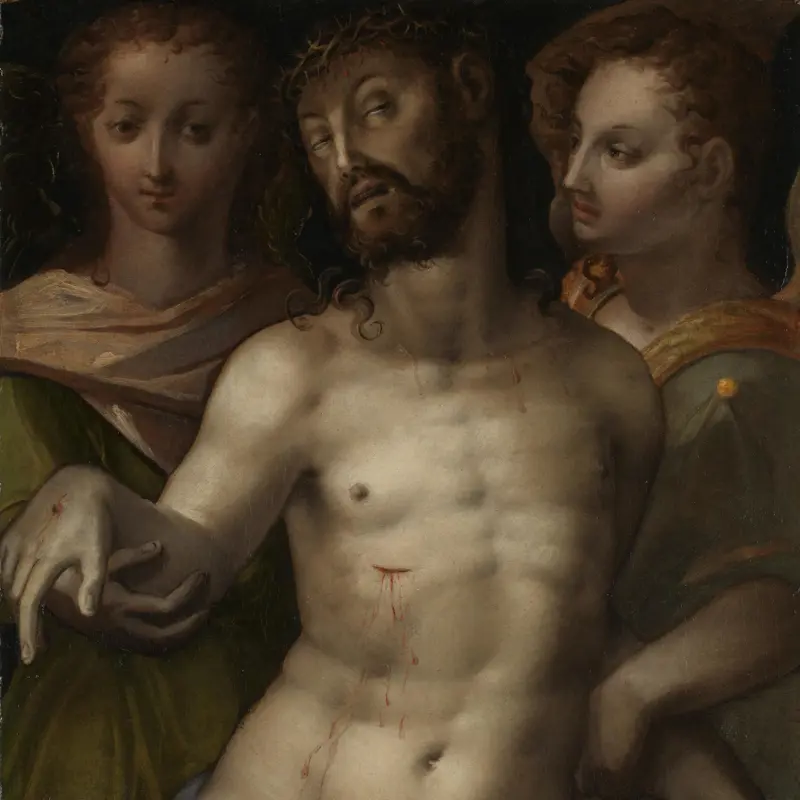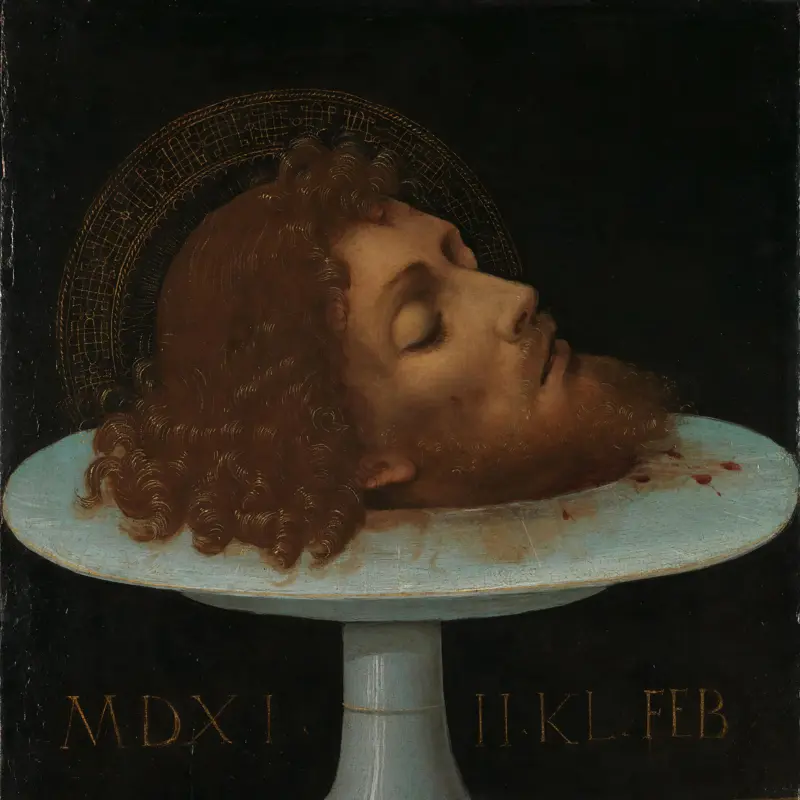Italian, 'A Female Figure resting on a Sword', early 17th century
About the work
Overview
A young woman leans on the hilt of a sword and there is what appears to be a fragment of a wheel next to her shoulder. She is probably Saint Catherine of Alexandria, the fourth-century martyr who was tortured by being bound to a wheel studded with iron spikes and later beheaded.
We don’t know who painted this picture, but it is quite sophisticated in its handling. The soft modelling of the clasped hands is quite different to the crisp modelling of the white undershirt. The figure appears all the more three-dimensional for being set against a plain dark background.
Although the painting is now classified as Italian, it may be by a French artist working in Rome in the seventeenth century, perhaps in the circle of Simon Vouet or Carlo Saraceni. The picture is painted on top of another one, which appears to be considerably earlier in date.
Key facts
Details
- Full title
- A Female Figure resting on a Sword, probably Saint Catherine of Alexandria
- Artist
- Italian
- Date made
- early 17th century
- Medium and support
- oil on wood
- Dimensions
- 53.3 × 45.7 cm
- Acquisition credit
- Presented by F.D. Lycett Green through the Art Fund, 1926
- Inventory number
- NG4177
- Location
- Not on display
- Collection
- Main Collection
Provenance
Additional information
Text extracted from the ‘Provenance’ section of the catalogue entry in Michael Levey, ‘National Gallery Catalogues: The Seventeenth and Eighteenth Century Italian Schools’, London 1986; for further information, see the full catalogue entry.
Bibliography
-
1956Levey, Michael, National Gallery Catalogues: The Eighteenth Century Italian Schools, London 1956
-
1986Levey, Michael, National Gallery Catalogues: The Seventeenth and Eighteenth Century Italian Schools, London 1986
-
2001
C. Baker and T. Henry, The National Gallery: Complete Illustrated Catalogue, London 2001
About this record
If you know more about this work or have spotted an error, please contact us. Please note that exhibition histories are listed from 2009 onwards. Bibliographies may not be complete; more comprehensive information is available in the National Gallery Library.

